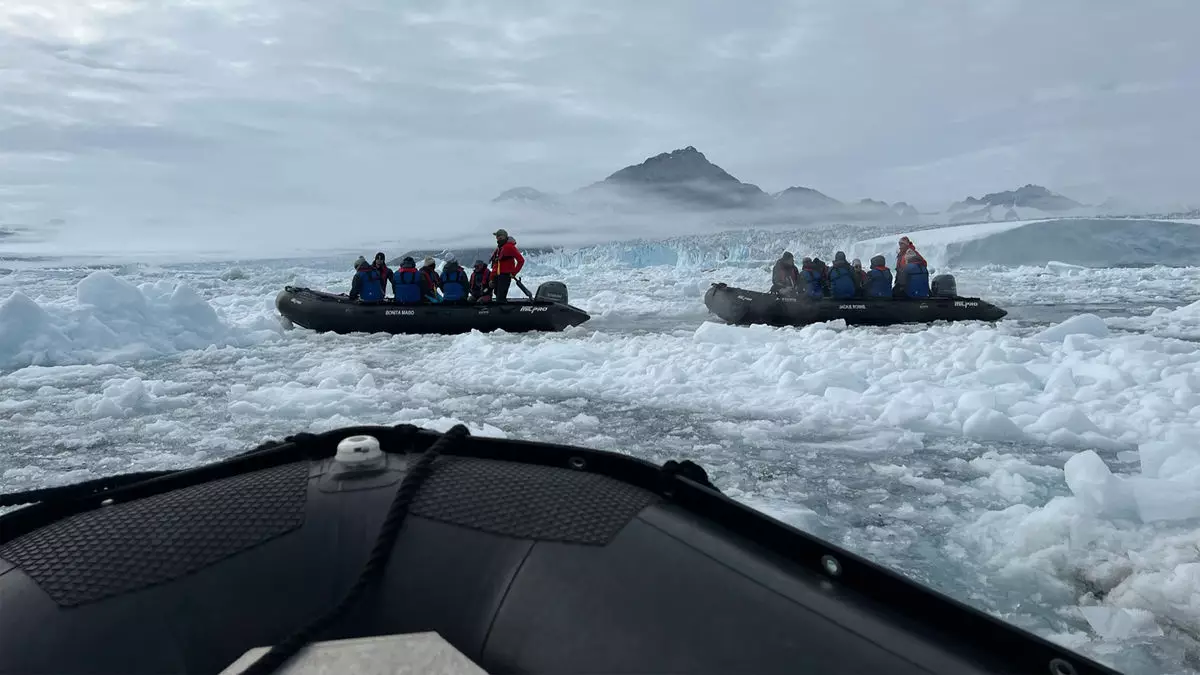When embarking on an expedition sailing journey, the significance of experience and vessel size cannot be overstated. This reality was made abundantly clear during a two-week adventure to the Arctic Circle aboard the 132-passenger Sylvia Earle, a new ship operated by Aurora Expeditions. While navigating the picturesque islands, glaciers, and icebergs of the Svalbard archipelago, our expedition team was faced with the challenge of exploring uncharted territories due to an unexpected ice jam along the eastern coast of Greenland.
The expedition leader, Howard Whelan, a seasoned professional with two decades of experience in polar regions, utilized his connections to secure permission from a small Norwegian military base on the island of Jan Mayen for us to land and explore its rocky coastline. This impromptu decision proved to be fortuitous as it allowed us the freedom to continue our exploration while other ships were hindered by the ice jam.
The combined expertise of Whelan, his team, and the captain was evident as they skillfully navigated around the ice, uncovering hidden gems such as the island of Norder Aputiteq with its abandoned 1940s-era weather station and Inuit dwelling ruins. This journey epitomized a true expedition experience, made all the more comfortable aboard the Sylvia Earle, a modern and luxurious small ship equipped with spacious cabins, gourmet dining options, and wellness amenities.
While the expedition market has seen an influx of new players with larger ships, traditional operators like Aurora Expeditions have remained steadfast in offering decades of experience aboard eco-friendly, purpose-built vessels. These ships may not boast butlers or 24-hour room service, but they feature thoughtful amenities such as heated bathroom floors, swimming pools, and observation decks.
As regulations evolve in polar regions, such as Svalbard and Antarctica, the size of expedition ships has taken on new importance. Beginning January 1st, only ships carrying 200 or fewer passengers will be permitted to land in select spots within national parks and protected areas of Svalbard. This shift emphasizes the value of smaller vessels like the Douglas Mawson, Aurora’s upcoming ship, which will accommodate an average of 154 passengers and prioritize guest comfort with Nordic interior design and private balconies.
In Antarctica, where strict guidelines limit the number of passengers that can disembark at a time, smaller ships like those operated by Aurora offer the advantage of more off-ship expeditions per day. The Douglas Mawson, equipped with the latest Ulstein X-Bow design for improved ocean crossing and fuel efficiency, will cater to solo travelers with single-berth cabins and feature diverse onboard amenities from restaurants to wellness areas.
As the expedition sailing industry continues to evolve, the importance of experience, navigation skills, and vessel size has never been more evident. Traditional operators like Aurora Expeditions are paving the way for sustainable and immersive travel experiences in some of the world’s most remote and pristine regions. By prioritizing comfort, exploration, and environmental responsibility, these operators are shaping the future of expedition cruising for adventurous travelers seeking authentic and unforgettable journeys.

